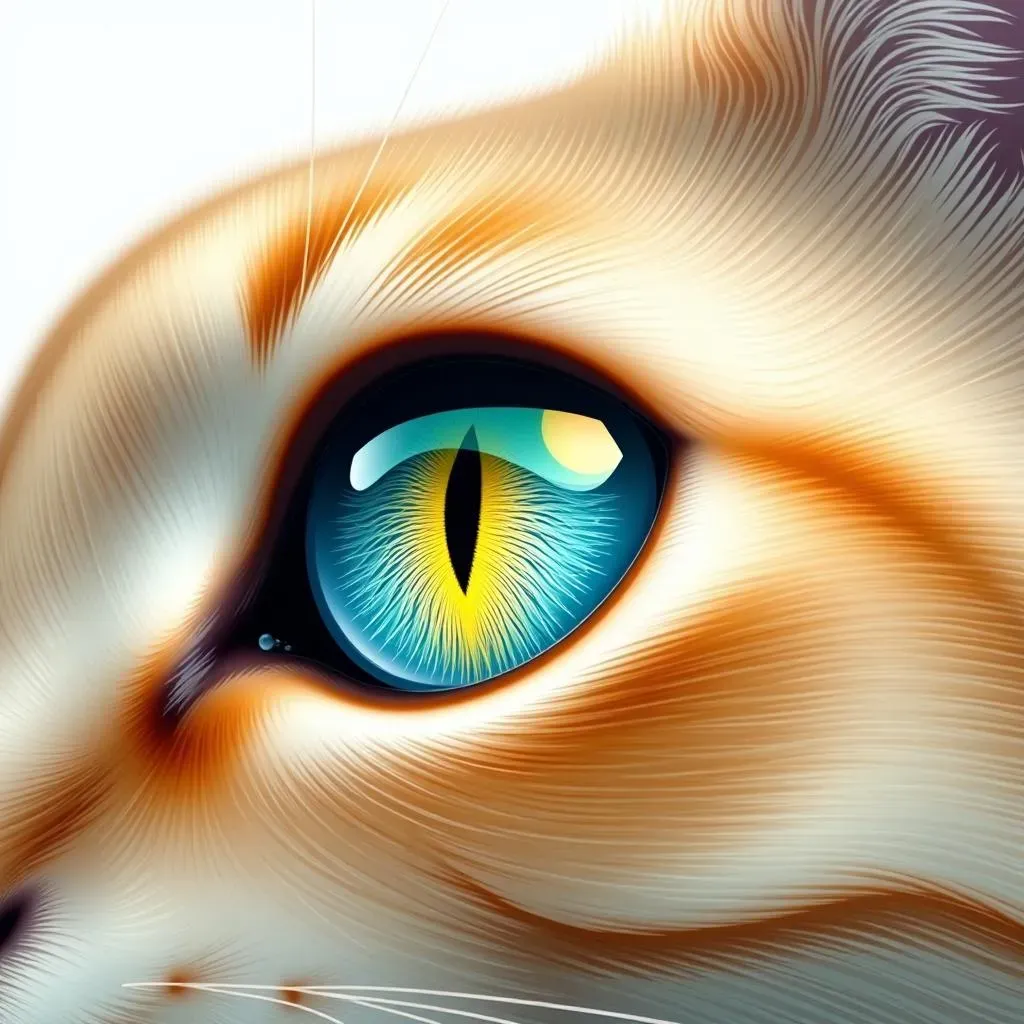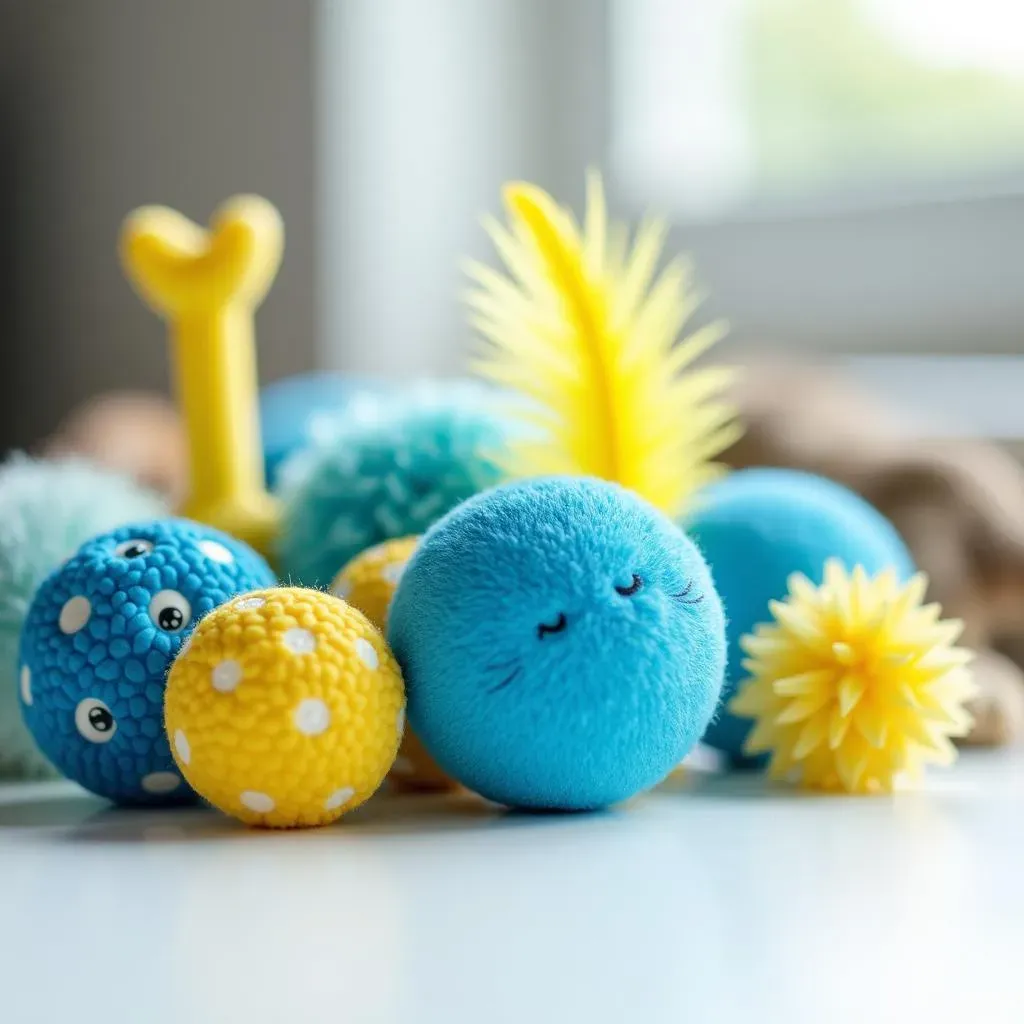Table of Contents
Ever wondered why your cat seems to ignore some toys while going crazy for others? It might not just be about the shape or the fluffiness; color plays a bigger role than you think! Cats see the world differently than we do, and understanding their color vision is key to choosing the best toys. This article will explore the science behind feline color perception, helping you figure out what color cat toys are best to grab your furry friend's attention. We'll look at which colors are most visible to them and how this knowledge can lead to more engaging playtime. Forget those dull, uninspiring toys! Get ready to learn how to pick toys that your cat will truly love. We'll also cover some fun ways to test your cat's color preferences and make playtime more exciting for both of you. Let's dive in and discover the colorful world of cat toys!
Understanding Cat Color Vision and Preferences

Understanding Cat Color Vision and Preferences
How Cats See the World
So, you're diving into the world of cat vision? It's way different than ours! Humans have three types of color-sensing cells in our eyes, called cones, which let us see a rainbow of colors. Cats, on the other hand, have only two types of cones. This means they're what we call "dichromatic," kind of like being red-green colorblind. Imagine seeing the world in mostly blues, yellows, and grays – that's pretty much what it's like for our feline friends. This is why that bright red laser pointer might not be as thrilling as you think, they see it as a dull shade.
The Science Behind Feline Vision
Now, don't feel too bad for them, their limited color range doesn't mean they're missing out on all the fun. Cats are masters of detecting movement and have excellent night vision, thanks to their high rod-to-cone ratio. Those rods help them see in low light, which is perfect for stalking those "dangerous" dust bunnies under the couch. Their eyes are also designed to pick up subtle changes in brightness, which is why they can spot that tiny mouse scurrying across the floor even in dim conditions. This makes them excellent hunters, even if they don't see the world in full technicolor.
Feature | Human Vision | Cat Vision |
|---|---|---|
Color Perception | Trichromatic (Red, Green, Blue) | Dichromatic (Blue, Yellow) |
Night Vision | Moderate | Excellent |
Motion Detection | Good | Excellent |
What This Means for Toys
So, what does this all mean when you're trying to buy the best toys? Well, those bright red and green toys that look so appealing to us won't stand out much to your cat. Instead, think about toys that are blue or yellow. These colors are much more visible to them and are more likely to catch their attention. Also, remember that movement is key. A toy that's blue or yellow and wiggles or bounces is going to be far more exciting than a static, brightly colored one. It's all about understanding their unique perspective to make playtime more rewarding!
The Top Colors for Engaging Cat Toys

The Top Colors for Engaging Cat Toys
Alright, so we've established that cats aren't seeing the world in the same vibrant hues we do. Now, let’s get to the good stuff: what colors actually get their attention? You're gonna want to focus on blue and yellow toys. These colors are on the opposite sides of the spectrum for cats, making them super visible. Think of it like this: if you’re trying to spot something in a crowded room, you’re more likely to see a bright yellow hat than a dull green one, right? It's the same for cats. They're much more likely to notice a bright blue ball or a yellow feather toy.
And it's not just about solid colors. Cats also seem to respond well to variations of these shades, like light blues, dark blues, and even some violets and purples, which are near blue on the color spectrum. Yellows, from pale to bright, are also great choices. The key is to make sure there is enough contrast and variation to catch their eye. Consider toys that incorporate both colors, or even patterns that combine blue and yellow. It’s like giving their eyes a little puzzle to solve, keeping them engaged for longer. So ditch the boring red and green, and embrace the blues and yellows. Your cat will thank you!
- Blue: Highly visible and engaging for cats.
- Yellow: Another top choice that stands out.
- Violet/Purple: Near blue, also a good option.
- Avoid: Red and green, as they don't stand out.
Experimenting with Color and Toy Types

Experimenting with Color and Toy Types
Putting Theory into Practice
so you've got the basics down about blue and yellow being the top colors, but now it's time for some real-world testing. Don't just go out and buy a bunch of blue and yellow toys and call it a day. Every cat is unique, and what works for one might not work for another. Start by getting a variety of toys in different shades of blue and yellow, and see which ones your cat gravitates toward. It's like being a scientist in your own living room, but with more purrs and less lab coats. Remember, observation is key. Watch how your cat interacts with each toy, and note which ones seem to hold their attention for the longest.
Beyond Color: The Importance of Toy Design
Now, while color is super important, it's not the only thing to think about. The type of toy also plays a big role. A bright blue ball might be fun for a while, but if it doesn't roll or bounce in an interesting way, your cat might lose interest. Think about toys that engage their natural hunting instincts: feather wands, toys that mimic prey, or even puzzle toys that challenge their minds. It's like giving them a mini-adventure every time they play. Experiment with different textures too. Some cats love soft plush toys, while others prefer crinkly or scratchy materials. The key is to find the perfect combination of color, texture, and movement that your cat finds irresistible. Don't be afraid to get creative and mix things up.
Toy Type | Why Cats Love It | Color Suggestions |
|---|---|---|
Feather Wands | Mimics prey, encourages hunting | Blue and yellow feathers |
Balls | Easy to bat and chase | Bright blue or yellow |
Puzzle Toys | Mental stimulation, treats | Mix of blue, yellow, and white |
Plush Toys | Comfort, carrying | Light blue, yellow accents |
Mix It Up and Keep it Fresh
Finally, don't get stuck in a rut with the same old toys. Cats, just like us, can get bored easily. Rotate their toys regularly to keep things interesting. You can even hide toys around the house for them to "discover." This makes playtime feel like a new and exciting adventure every time. Try introducing new toy types or colors every few weeks to see if your cat's preferences change. And don't forget to engage with your cat during playtime. A little interaction from you can make any toy ten times more appealing. It's not just about the toys, it's about the fun and bonding that comes with playing together. After all, a happy cat makes for a happy home, right?
Wrapping Up: The Colorful World of Cat Toys
So, what have we learned about cat toys and color? It turns out, our feline friends aren't just being picky; they're seeing the world—and their toys—in a unique way. While they might not appreciate a rainbow of colors like we do, they definitely have their preferences, with blues and yellows generally being the most visible and engaging. By understanding this, you can make more informed choices when buying or making cat toys, leading to more exciting and stimulating play sessions. Don't be afraid to experiment, though! Offer a variety of colors and see what sparks your cat's interest. After all, a happy, playful cat is the best reward. And remember, the best toy is the one your cat actually plays with, no matter what color it is.